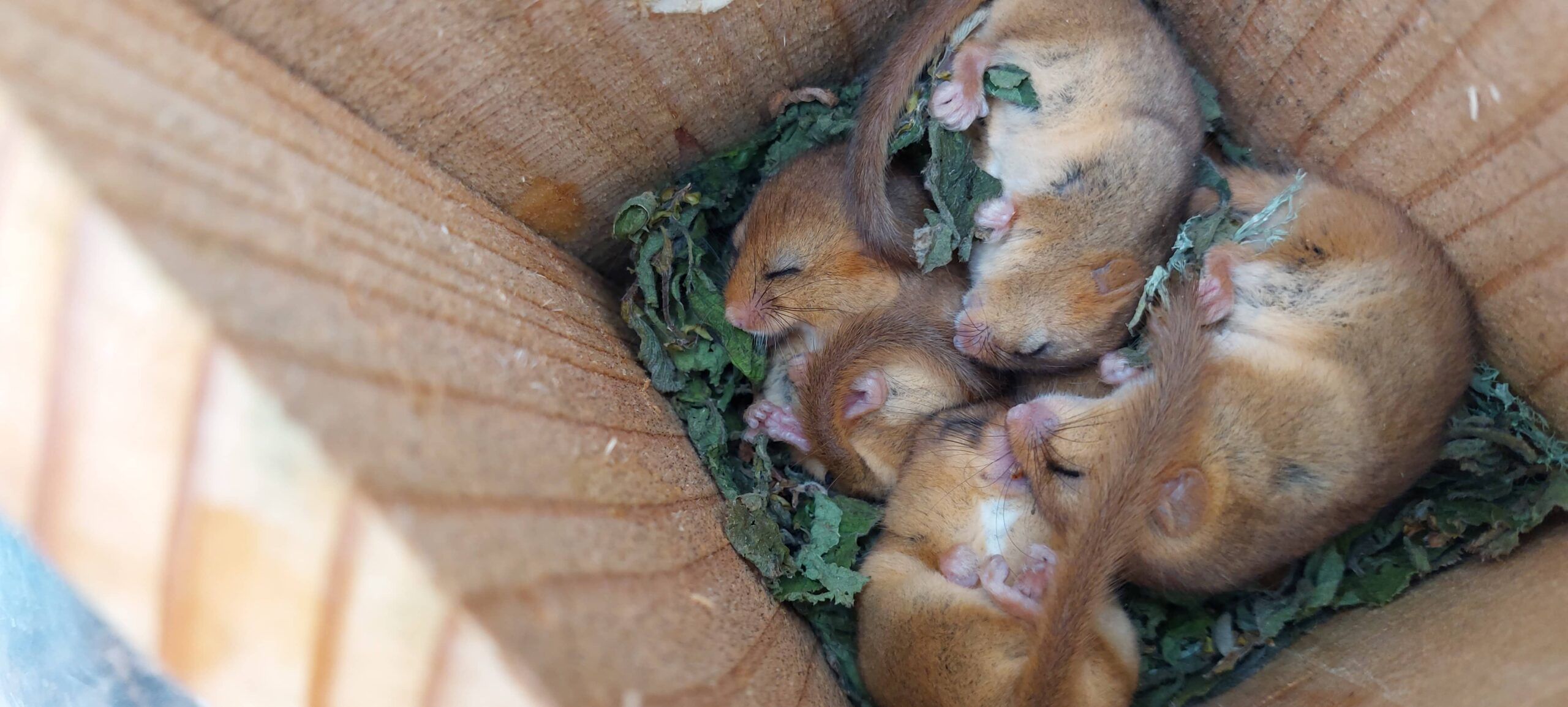Search by topic
The tradition of celebrating orchards As gathering swallows twitter in the skies ere their winter flight, orchard owners and managers across the UK are preparing to open their gates to the public for the year’s biggest celebration of orchards – Apple Day. In 1990, motivated by the relentless loss of traditional orchards in the post-war …
Read article...The National Dormouse Monitoring Programme (NDMP) primarily focuses on tracking the population of hazel dormice and gathering essential biometric data on this endangered species to assess the health of Britain’s dormouse population. However, dormouse nest boxes are often utilised by other wildlife. Over the past 20 years, we’ve regularly asked dormouse monitors to record any …
Read article...The first ever National Hedgehog Conservation Strategy has been published by leading wildlife charities People’s Trust for Endangered Species (PTES) and The British Hedgehog Preservation Society (BHPS). The strategy has been designed for conservation NGOs, local councils, farmers, land managers and Government. It highlights the factors causing a decline in native hedgehog populations which urgently …
Read article...A major step forward for hedgehog conservation The State of Britain’s Hedgehogs 2022 report, published by People’s Trust for Endangered Species (PTES) and the British Hedgehog Preservation Society (BHPS), revealed that the UK’s hedgehogs have declined by between 30-75% in rural areas since 2000. We stepped into action to identify the key threats these hedgehogs are …
Read article...‘A common pipistrelle can eat over 3,000 tiny insects in a single night.’ It’s a stat that gets repeated a lot. It’s a common sight on summer evenings, a little after sunset, to see pipistrelles feeding overhead on small flies, midges and mosquitos. Pipistrelles are aerial hawkers, catching and eating their prey on the wing, …
Read article...Farmers can now use Land App to assess hedgerow condition and satisfy new SFI scheme requirements, thanks to collaboration with People’s Trust for Endangered Species Farmers and land managers across the UK can now use Land App to assess and record the condition of their hedgerows to satisfy the hedgerow assessment action (CHRW1) in the …
Read article...The value of healthy hedgerows Hedgerows have been at the heart of British farming for centuries. However, without the traditional lifecycle approach to management, their structural condition has been steadily declining. Last century, over half of our hedgerows were lost through incentivised removal; whilst recognition of their value has turned this around, it means those …
Read article...PTES staff were thrilled about the exciting news that one of the rarest reptiles in the world has had a boost in numbers, thanks to the impressive efforts of PTES partner, Fauna & Flora. Read on for an inspiring report from their team and local experts about the discovery of Critically Endangered Siamese crocodile nests …
Read article...Ellie Scopes recently completed her PhD at the University of Exeter. She investigated how often and when hazel dormice are found in hedgerows and scrubby habitats in the South West. Her results are a useful insight into how dormice use these habitats and how we might improve our surveying and management of these critical areas. …
Read article...Setting up the National Dormouse Monitoring Programme The National Dormouse Monitoring programme (NDMP) was set up in 1990. It started with only 13 sites but under the guidance and enthusiasm of Pat Morris and Paul Bright it quickly grew and, within two years, there were 28 sites. In September 1992 the first newsletter, called The Dormouse …
Read article...Zebo Isakova is Project Manager at Saiga Conservation Alliance (SCA). She works with our Conservation Partner Elena Bykova. Here Zebo describes their Saiga Day celebrations last year, when Nida Al-Fulaij, CEO, visited their project, highlighting their successful engagement with the local community and the positive impact of their conservation efforts. SOS – Save Our Saiga: …
Read article...Following the county’s first and only dormouse reintroduction in 2001, this release boosts genetic diversity for this isolated population This week, 10 rare hazel dormice have been reintroduced into a Bedfordshire woodland to bolster the county’s only existing population. The release will create a bigger and more genetically diverse population of hazel dormice in the …
Read article...Press and media
For all media enquiries please contact Jane Bevan or Adela Cragg at Firebird Public Relations on 01235 835297 or email ac@firebirdpr.co.uk.












